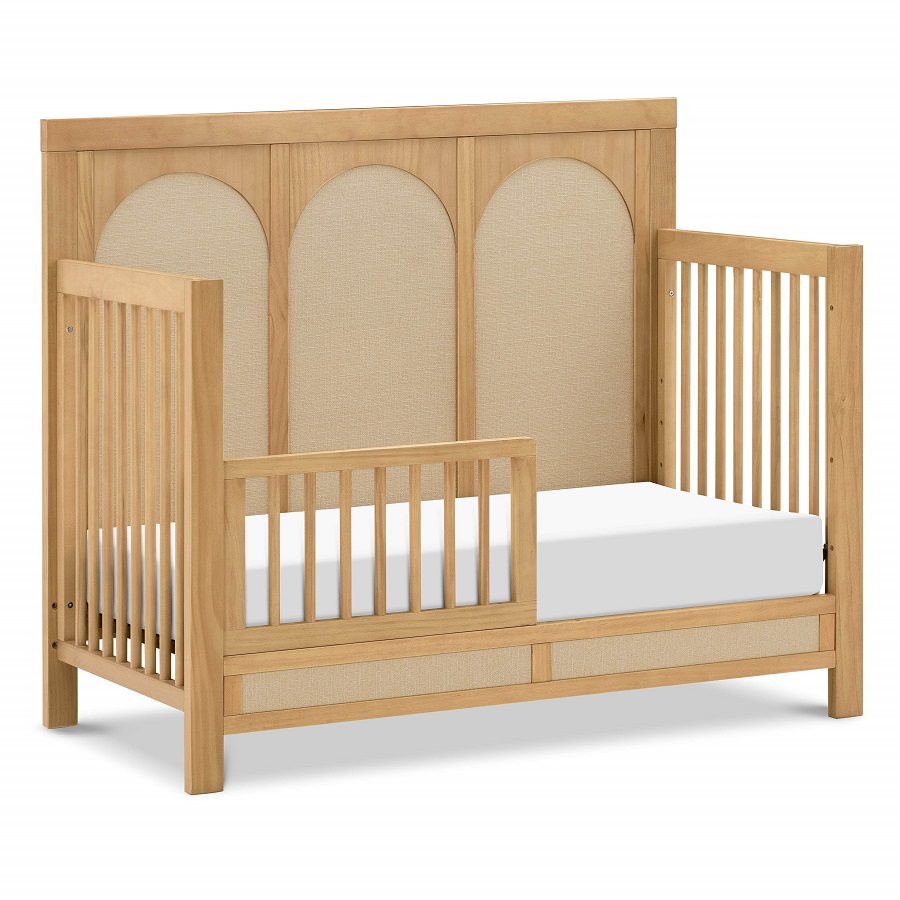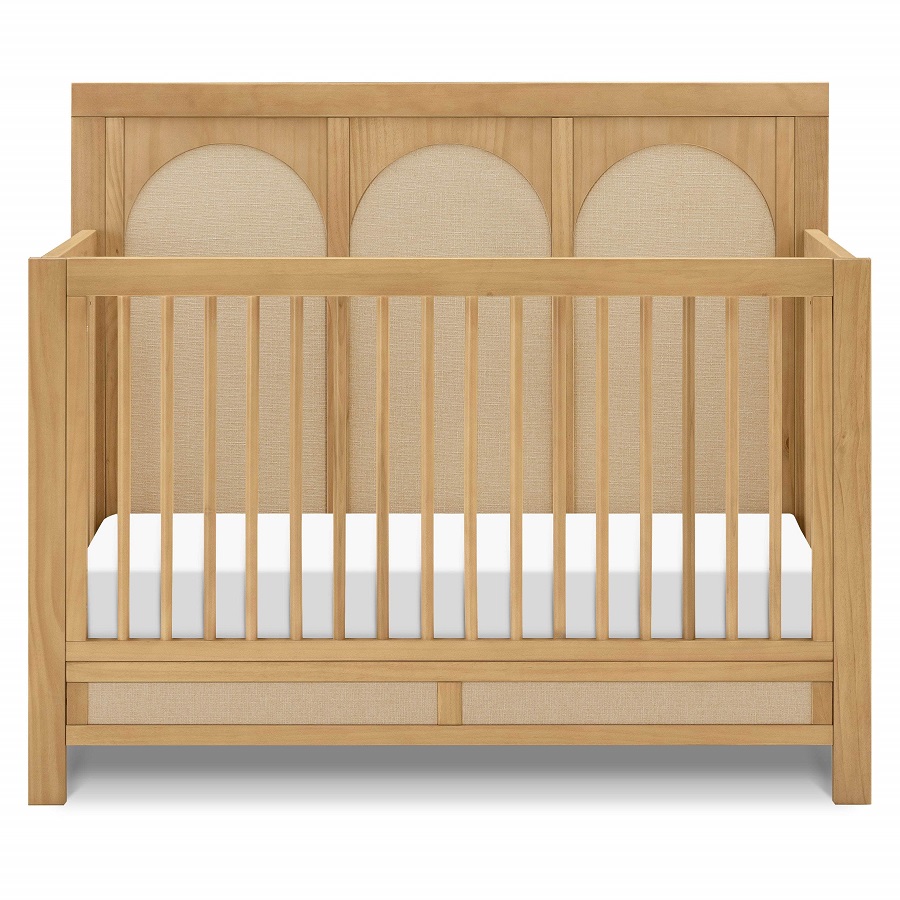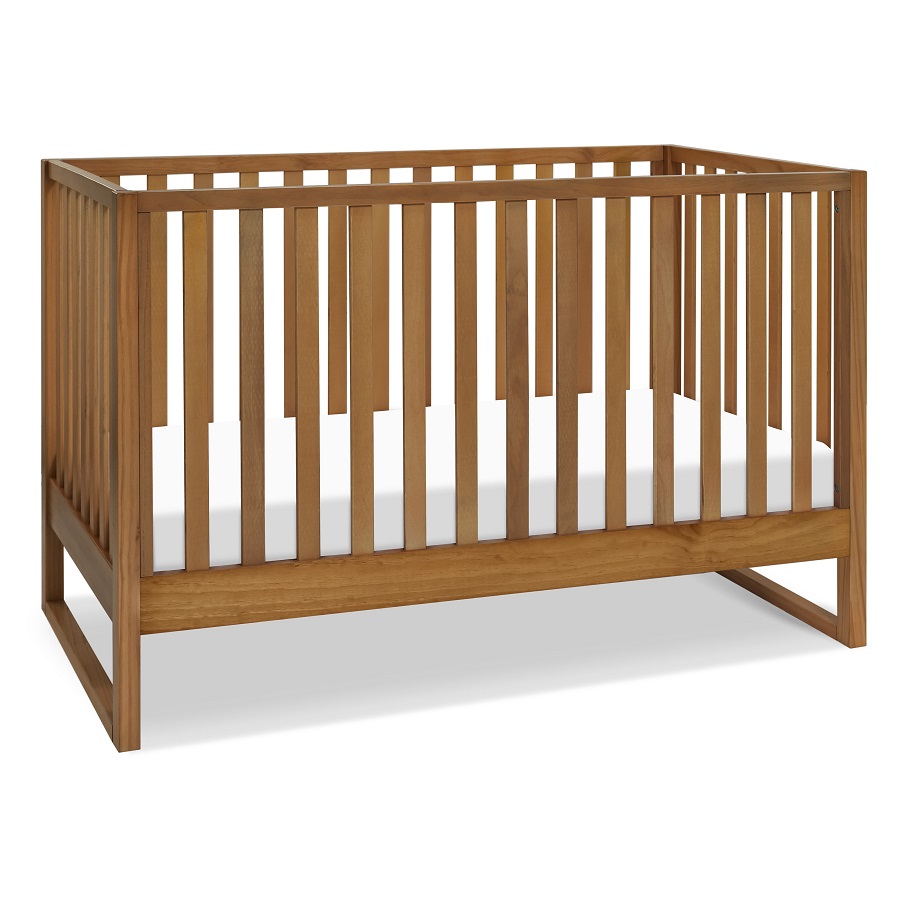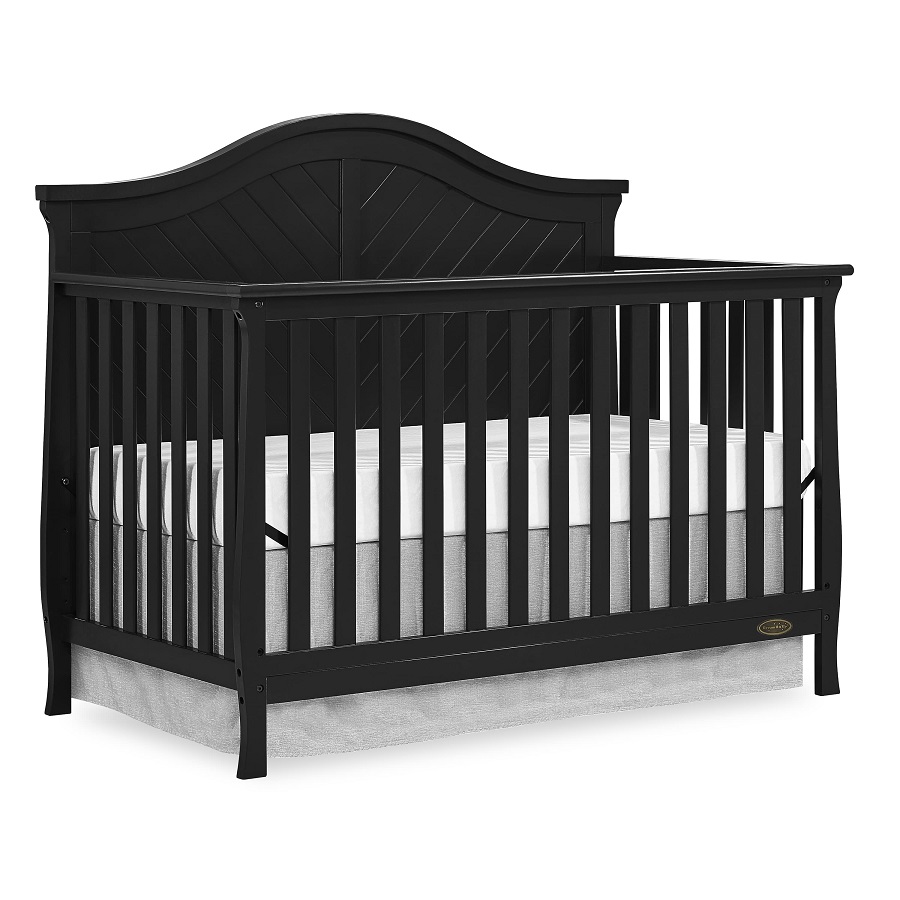Introduction to Convertible Cribs
Parents choose convertible cribs for their adaptability. They adjust to different stages of your child’s growth. A baby crib that turns into a bed saves space. It also saves money. You won’t need to buy a new bed as your child grows.
Convertible cribs are versatile pieces of baby furniture. They grow with your child. These cribs can transform into toddler beds. This feature makes them a practical long-term investment.
Convertible cribs come in various designs and styles. Some have simple conversion kits. Others have more complex systems for changing the crib’s function. However, all aim to provide a smooth transition.
To sum up, a convertible crib is a smart choice. It serves your baby from infancy through to their early childhood years. In the next sections, we will dive deeper into their benefits, types, and the conversion process.

Benefits of Choosing a Convertible Crib
Choosing a convertible crib offers several benefits that make it an appealing choice for parents. Here’s why you might consider a baby crib that turns into a bed for your nursery:
- Long-Term Savings: Investing in a convertible crib can save money over time. You buy it once, and it grows with your child. No need to purchase additional beds as your child ages.
- Space Efficiency: A convertible crib makes efficient use of limited space. It transitions smoothly from a baby crib to a toddler bed, and sometimes even into a full-sized bed, without requiring extra room for different furniture.
- Design Continuity: Since the crib morphs into a bed, you maintain a consistent design and decor in your child’s room. This is especially advantageous if you’ve chosen a style you love and want to keep for years.
- Ease of Transition for Child: Graduating from a crib to a bed is a big step for toddlers. A convertible crib eases this transition. The familiar surroundings can provide comfort to a child facing major changes.
- Adaptability: Convertible cribs are designed to meet changing needs. Whether your child is a newborn, a toddler, or a young child, the same piece of furniture adjusts to fit.
In summary, a convertible crib is not just a practical investment; it’s also a versatile, economical, and comforting choice for your nursery. When considering nursery furniture, thinking about a baby crib that turns into a bed can be a forward-thinking decision.
When to Convert Your Baby’s Crib into a Bed
Knowing the right time to change your baby crib into a bed is vital. It helps ensure your child’s safety and comfort. Most parents wonder about the best time to make this transition. Here are some signs that your child is ready:
- Outgrowing the Crib: If your child has grown tall and is trying to climb out of the crib, it’s time. A bigger bed will give them more room.
- Age Factor: Typically, children are ready to move on from cribs between 18 and 36 months old. Consider their readiness and comfort level.
- New Sibling on the Way: When expecting another child, you might need the crib for the newborn. Convert the crib for the older sibling in advance.
- Increased Independence: If your toddler shows signs of independence, like wanting their own bed, take that as a cue. This shows they are ready for a change.
- Safety First: Safety is the top priority. If staying in the crib poses risks, such as attempts to climb out, convert the crib. This can prevent potential falls or injuries.
These indicators will guide you in recognizing when your baby is ready for their new bed. Watch for these signs and plan the switch accordingly. Remember each child is different. Stay tuned to their needs and progress in development for cues.
Types of Convertible Cribs and Their Features
Choosing the right type of convertible crib for your nursery involves knowing the various options and their features. Let’s explore the most common types:
- Standard Convertible Cribs: These cribs convert simply into a toddler bed and then into a daybed. Some may even become a full-sized bed with the purchase of extra rails.
- Mini Convertible Cribs: Ideal for smaller spaces, mini cribs offer the same functionality as standard cribs but in a more compact size. They convert into a smaller bed suitable for toddlers.
- Cribs with Storage: A baby crib that turns into a bed, which also includes drawers or shelves, provides additional storage space. This is convenient for keeping the baby’s essentials within arm’s reach.
- Sleigh-Style Cribs: These elegant cribs boast a distinctive curved design. They transition into toddler beds or full-size beds that retain their classic aesthetic appeal.
- Modern Style Cribs: Geared towards contemporary designs, these cribs feature clean lines and may include unusual materials or colors. They often convert into stylish junior beds.
Each type of crib comes with unique features catering to different preferences and needs. Some offer simple conversion mechanisms that make the transition easy even for non-tech-savvy parents. Others provide advanced adjustability for mattress heights to keep up with your child’s growth. Remember to consider how each crib matches your nursery’s space, design, and your family’s lifestyle needs. With a clear idea of the benefits of a baby crib that turns into a bed, you are well on your way to making an informed decision for your little one’s comfort and safety.

Step-by-Step Guide on Converting a Crib to a Bed
Transforming your baby crib into a bed can seem daunting. But with the right steps, it becomes a task that most parents can handle with ease. Below is a straightforward, step-by-step guide to converting your convertible crib into a toddler bed:
- Read the Manual: Start by reading the conversion instructions in the manual. Every crib is different. Knowing your model’s specific steps is crucial.
- Gather Tools: Next, collect any tools you’ll need. Usually, a screwdriver suffices, but check your crib’s requirements.
- Remove the Bedding: Take out all the bedding. Remove mattress, sheets, and any crib bumpers.
- Lower the Mattress Base: If your crib has adjustable mattress heights, lower it to the bottom setting. This step is for cribs that convert without disassembly.
- Detach the Front Rail: Most cribs require you to remove the front rail. Unscrew and gently set it aside.
- Add the Toddler Rail: If your crib came with a toddler guard rail, attach it. It keeps your child from rolling out of bed.
- Secure the Mattress: Place the mattress back in. Ensure it fits snugly against the toddler rail.
- Double-Check the Stability: Give the bed a gentle shake. Make sure everything is secure and stable.
- Clean the Area: Wipe down the crib frame. Ensure no loose screws or sharp edges are left.
- Make the Bed: Finally, dress the bed with appropriate-sized bedding. Your toddler bed is now ready.
This basic guide should help you efficiently convert a baby crib into a bed. Keep your instruction manual close, and don’t rush the process. Safety is paramount, so if at any point you’re unsure, seek advice or help. Once you’re done, your child will have a new bed that feels familiar yet perfectly suited for their growing independence.
Safety Considerations When Converting a Crib
Safety should always be your top priority when converting a baby crib into a bed. Here are essential safety considerations to keep in mind:
- Check for Stability: Ensure the converted crib is stable with no wobbling. A stable bed prevents accidents.
- Inspect for Damage: Look for any signs of wear or damage on the crib. Damaged parts can be hazardous.
- Secure All Fasteners: Make sure all screws and bolts are tight and secure. Loose parts can cause the bed to collapse.
- Smooth Edges: Feel around for any sharp or rough edges. File any hazardous spots to protect your child from cuts.
- Use the Right Mattress: Match the mattress size correctly with the bed frame. Incorrect sizes can create dangerous gaps.
- Anchor the Bed: If possible, anchor the bed to the wall for extra security. This prevents tipping.
- Follow Manufacturer Instructions: Always adhere to the manufacturer’s guidelines for the conversion. This ensures the bed transforms correctly.
Remember, constantly monitor the condition of the converted bed. Regular checks help maintain safety and security for your child’s sleeping environment.

Tips for a Smooth Transition for Your Child
Transitioning from a baby crib that turns into a bed requires more than just a physical transformation of furniture. It involves emotional and behavioral adjustments for your child as well. Here are some useful tips to ensure a smooth transition for your little one:
- Maintain Routine: Keep your child’s bedtime routine consistent. Familiar rituals offer comfort during changes.
- Introduce Gradually: Talk about the upcoming change. Let your child explore the new bed setup before the switch.
- Involve Your Child: Allow your child to help choose new bedding. This creates excitement and a sense of ownership.
- Offer Reassurance: Stay positive about the change. Reassure your child that their new bed is a sign of growing up.
- Be Patient: Understand that it may take time. Your child might struggle with the change at first, but patience will pay off.
- Ensure Safety: Explain the importance of staying in bed at night for safety. Keeping a nightlight on can also provide comfort.
- Celebrate the Milestone: Mark the occasion with a special activity or reward. Celebrating reinforces the transition as a positive event.
By applying these tips and taking into account the individual needs of your child, the transition from a baby crib to a bed can be a wonderful milestone in their development. Remember, each child is unique, and flexibility is key to a successful change.
Accessorizing and Customizing the Converted Bed
Once you have converted the baby crib into a bed, you can start personalizing it. Accessorizing and customizing not only enhances the look but also increases the bed’s appeal to your child. Here’s how to add a personal touch:
- Choose Fun Bedding: Pick sheets and blankets with your child’s favorite colors or characters. Fun bedding makes bedtime exciting.
- Add Some Pillows: Soft pillows can add comfort. Choose fun shapes or themes that your child loves.
- Hang a Canopy: A canopy over the bed can create a magical space. It can be a playful or calming addition.
- Include Side Rails: For extra safety, add side rails. They can also be themed or colorful.
- Install a Bedside Lamp: A cute lamp allows for bedtime reading. It also helps those who might be afraid of the dark.
- Place a Rug: A soft rug beside the bed provides a warm place to step onto in the morning.
- Wall Decor: Hang art or decals that reflect your child’s interests. Walls come to life with decorations.
- Storage Options: Add baskets or bins for toys. This keeps the room tidy and organized.
- Personalize with Name Signs: Put your child’s name on the bed or wall. It gives them a sense of ownership.
By focusing on these details, you give your child a sense of excitement and pride in their new bed. This can also ease the transition and make them feel more secure in their new sleeping space.
